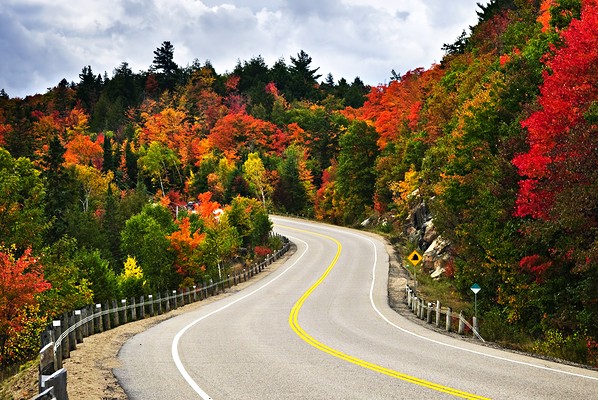
Dangers of Driving: Rural Roads Vs Interstates
July 30, 2014
The dangers of driving on a country road are much different than those of high-speed freeways and interstates. These two types of travel each offer their own hazards. Some are well-known, while others may be more surprising. That’s why it’s good to know exactly what you’re dealing with before hitting the highway.
Country Roads
You’d be forgiven if you assumed that country roads are safer than high-speed, high-traffic freeways. Actually, it’s quite the opposite. While more crashes happen in urban areas, more fatalities occur on those lonesome old country roads. Why?
- Curvy roads. Rural routes are often more narrow, with more curves and hills that block the view. All too often, drivers underestimate these curvy roads and drive too fast to maintain control.
- No passing lanes. Fast drivers can get frustrated easily out in the country. With little-to-no passing lanes, many people attempt to pass slower vehicles on the left side of the road. This can be especially dangerous in no-passing zones and areas where the view is blocked by hills or curves.
- No shoulders. Often, there is no shoulder to pull over onto when a tire goes out. This also means that there is nowhere to swerve to escape emergency situations (such as an on-coming vehicle passing a slower driver in the left lane).
- Wildlife. To top it all off, the local wildlife have been known to cause their fair share of crashes. Deer are especially infamous for causing car crashes out in the country. They will jump out in front of you at any given moment, whether they see you or not. In fact, sometimes they seem downright suicidal, waiting for a car to pass so that they can jump out at the last second.
Interstates
High speed interstate travel comes with its own fair share of troubles. While more deaths occur on country roads, far more non-fatal crashes happen on these high-traffic routes. Common reasons include:
- More traffic. The more cars on the road, the higher your chances of being involved in an accident.
- Congestion. When things get especially crowded, drivers begin to shed their safe-driving common sense. In an effort to force their way through slow-moving traffic, many people will make poor decisions, drive recklessly and even develop road rage.
- High speeds. When traveling at 70+ mph, it can be hard to react to an emergency situation before it’s too late.
- Fatigue. Driver fatigue is more common on interstates. This is because interstates and freeways have more long-distance travelers that have been on the road for hours and hours at a time. Too many people underestimate the dangers of driver fatigue. They try to keep on truckin’ no matter how long they have been driving and the result is often dangerous.
Knowing the risks of the road will help you to become a safer driver on your travels. Keep these common dangers of driving on your mind before you head out, and you’ll be ready for anything.
